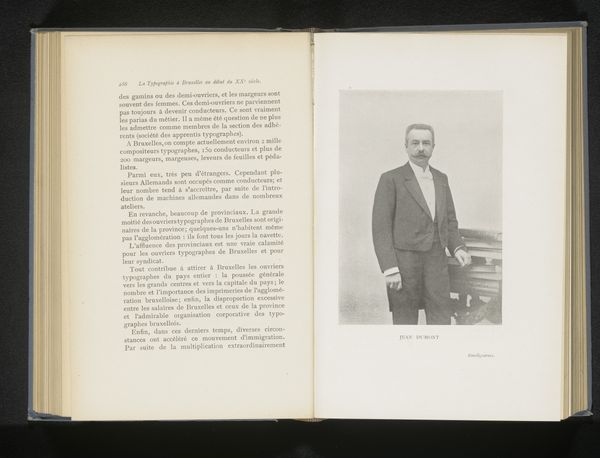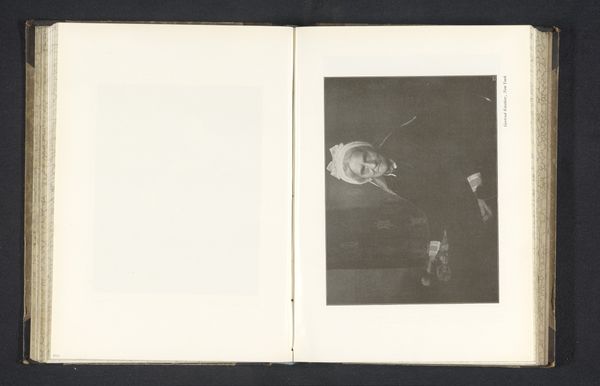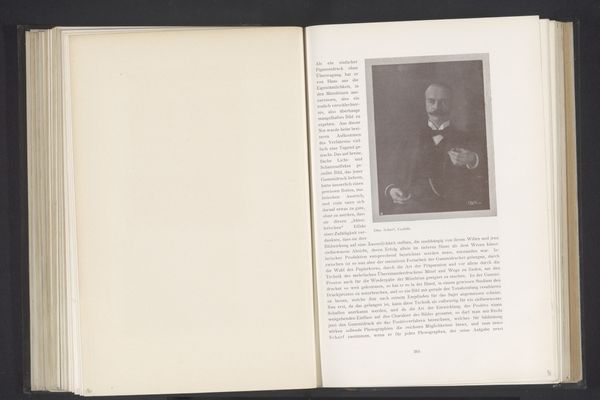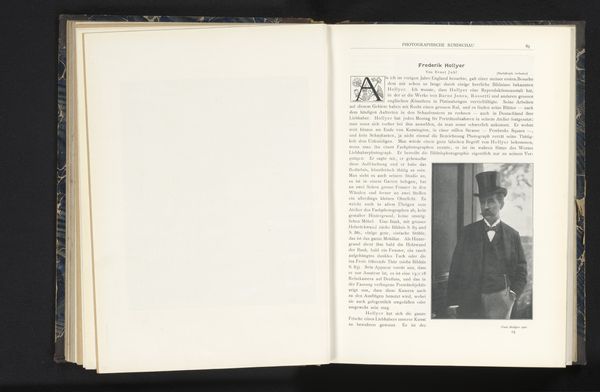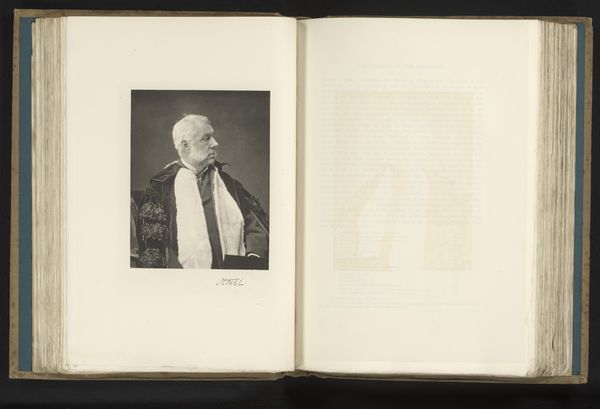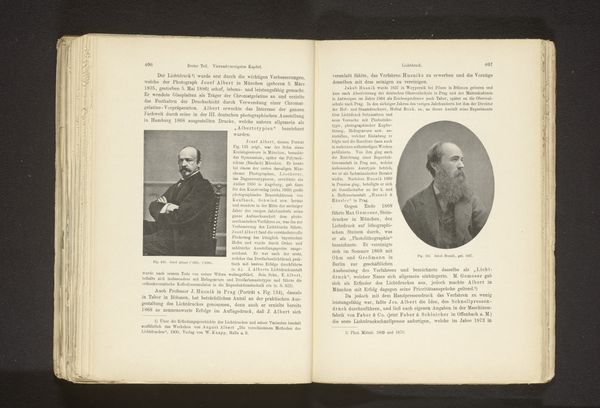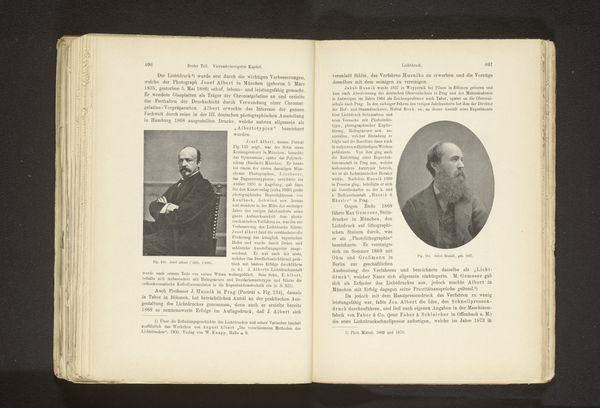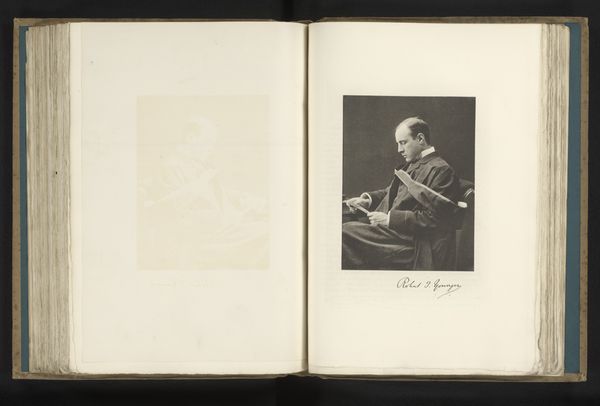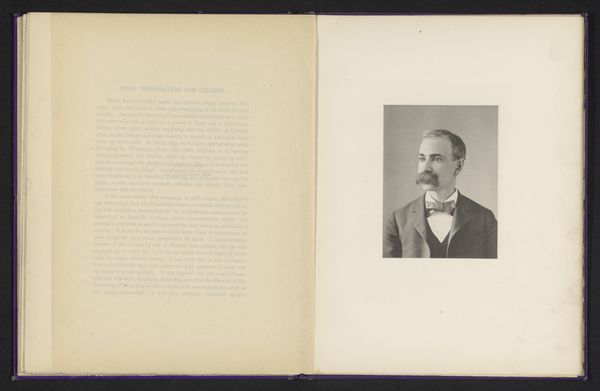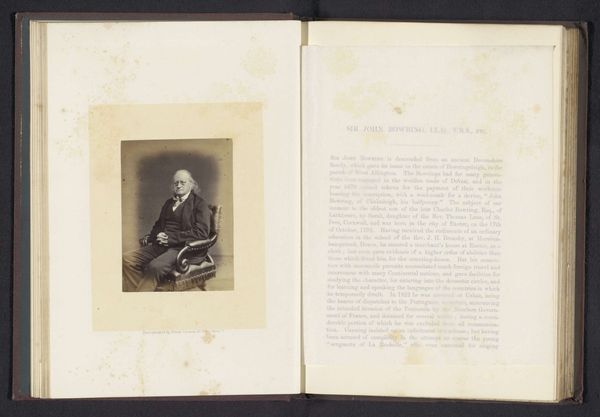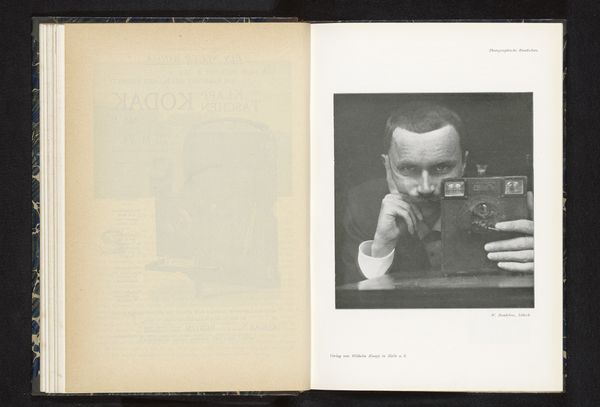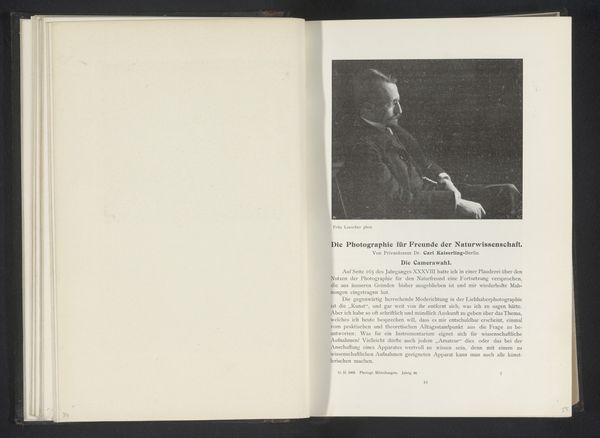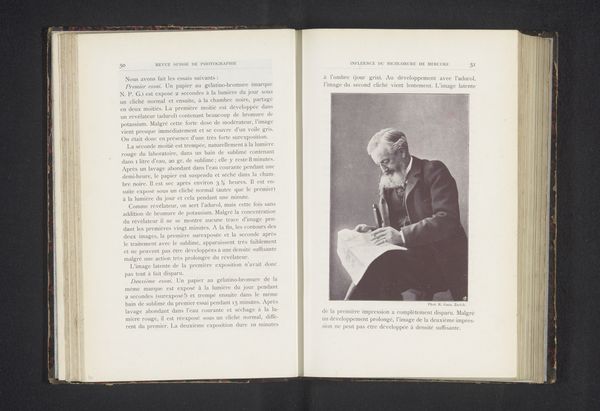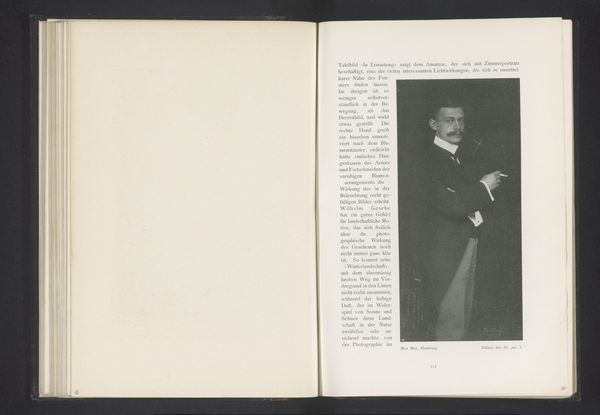
Portret van een schilder met een palet in de ene hand en in de andere hand een kwast before 1900
0:00
0:00
print, photography
#
portrait
# print
#
neo-impressionism
#
landscape
#
photography
Dimensions: height 159 mm, width 119 mm
Copyright: Rijks Museum: Open Domain
Editor: Here we have "Portret van een schilder met een palet in de ene hand en in de andere hand een kwast", or "Portrait of a painter with a palette in one hand and a brush in the other." It's an undated work, but thought to be from before 1900, by Th. u. O. Hofmeister, created through print and photography. It seems so straightforward, a simple photograph. What is it that grabs your attention in this image? Curator: I'm particularly struck by the context of photographic prints within art production. The portrait, reproduced through photographic means, moves us to consider how technology was democratizing artistic representation and skills. Editor: Democratizing? Could you say more about that? Curator: Certainly. Consider the means of production. Who had access to painting materials and training before photographic reproduction? By utilizing technologies of mass reproduction like photography and printing, this piece potentially opened access for wider participation and documentation. We have to consider photography as an industry as well. How has photographic printing been made available through capital? Who benefits and who loses in such availability? Editor: I see. It's about access to the tools and processes of artmaking. It shifts focus from inherent artistic genius to the physical means of creation and its societal implications. Curator: Precisely. Look closely at the paper stock, the ink. What do they communicate about value and audience in contrast to the image’s subject being an art professional? The landscape depicted flattens the artistic hierarchy and allows for larger consideration. Editor: So, it’s less about the painter as an individual and more about the act of art creation and consumption within a changing society. I’ve never thought of a simple portrait print having so much to say about labour. Curator: Exactly. Now consider, what other "high art" practices are brought into question through accessible photographic production?
Comments
No comments
Be the first to comment and join the conversation on the ultimate creative platform.
